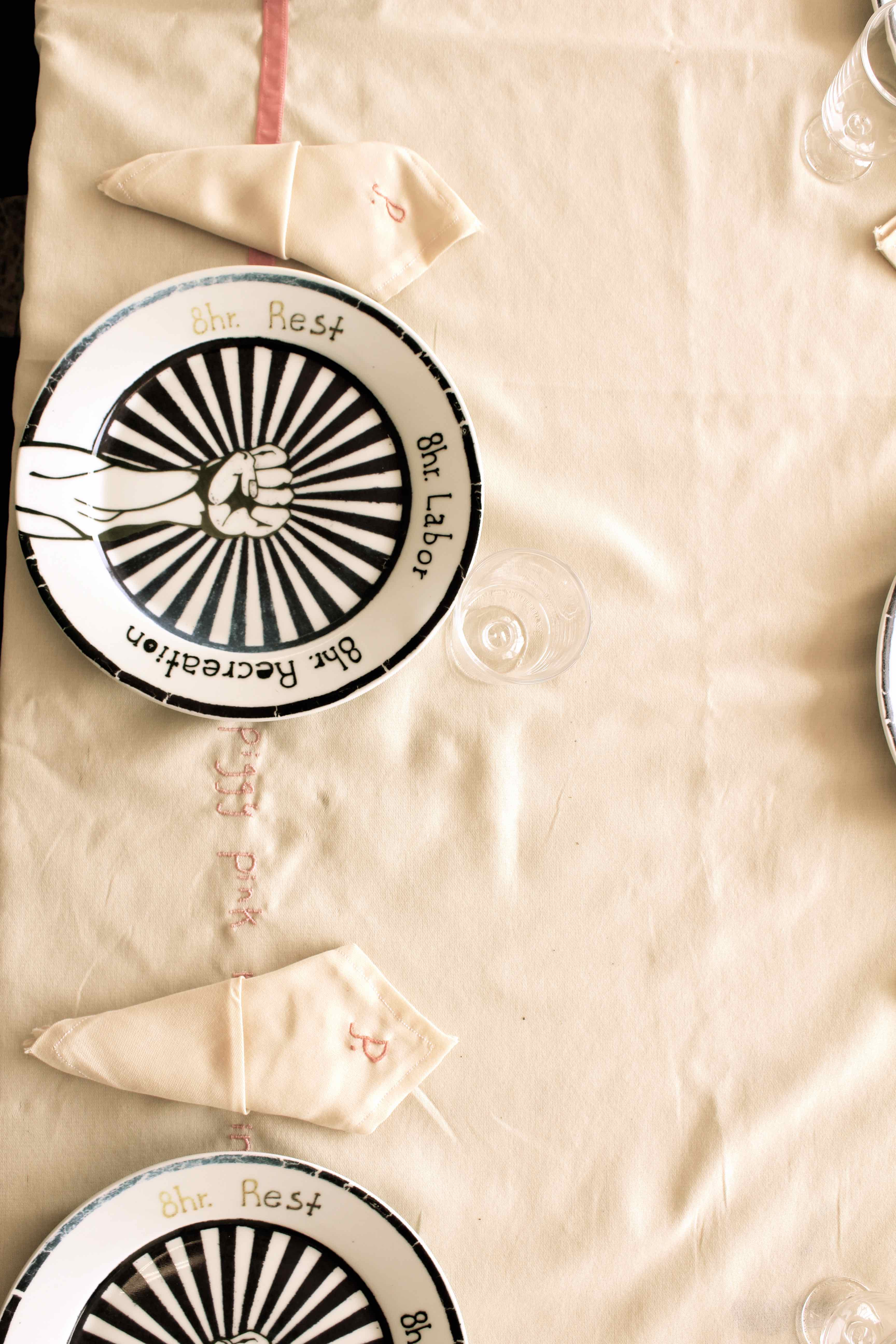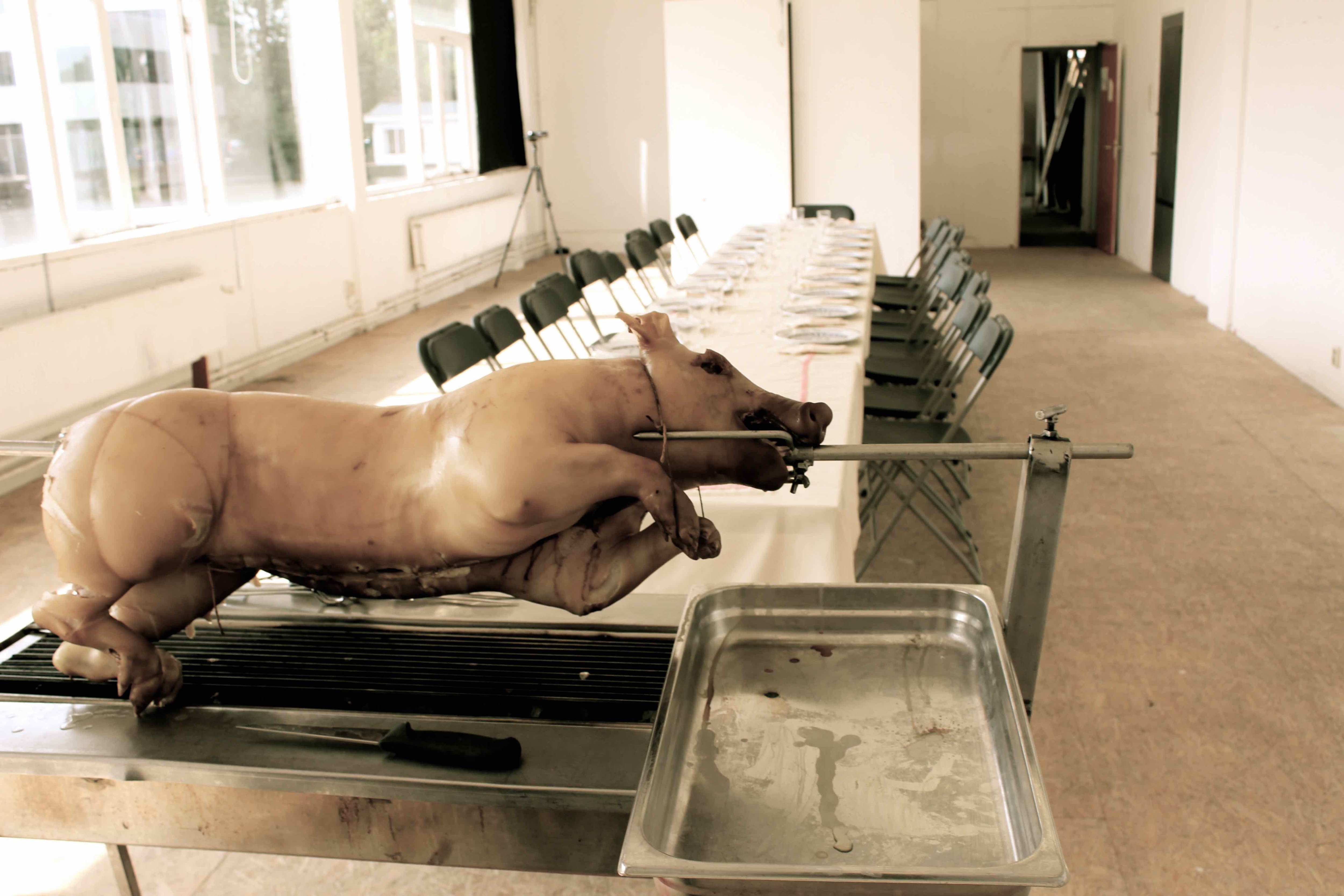SEDER
Meal for 18 peopleOne butcher, one embroidered cloth tablecloth, seventeen embroidered cloth napkins, eighteen original dinner plates, four bottles of kosher wine, one Master of Ceremonies, four masks made of fabric and glass beads, one oak cutting board, one painted cloth napkin, one piglet on barbecue, one porcelain bowl, one porcelain water pitcher, two servers, eighteen wine glasses
34:27 minutes
2013
The project reimagines Jewish rituals by attempting to make a pig kosher, creating an oxymoron that contrasts sacred forms with deliberately non-kosher elements. Inspired by Peter Shaffer’s Equus, Seder explores whether it is possible to achieve holiness or sacredness outside the bounds of religious doctrine.
Through unconventional means, such as using a kosher slaughter knife for pork, Seder seeks to subvert the religious weight of traditional symbols and forms. By blending the sacred with the mundane in provocative ways, the project invites a reconsideration of how sacredness can be defined and experienced beyond established religious framework










